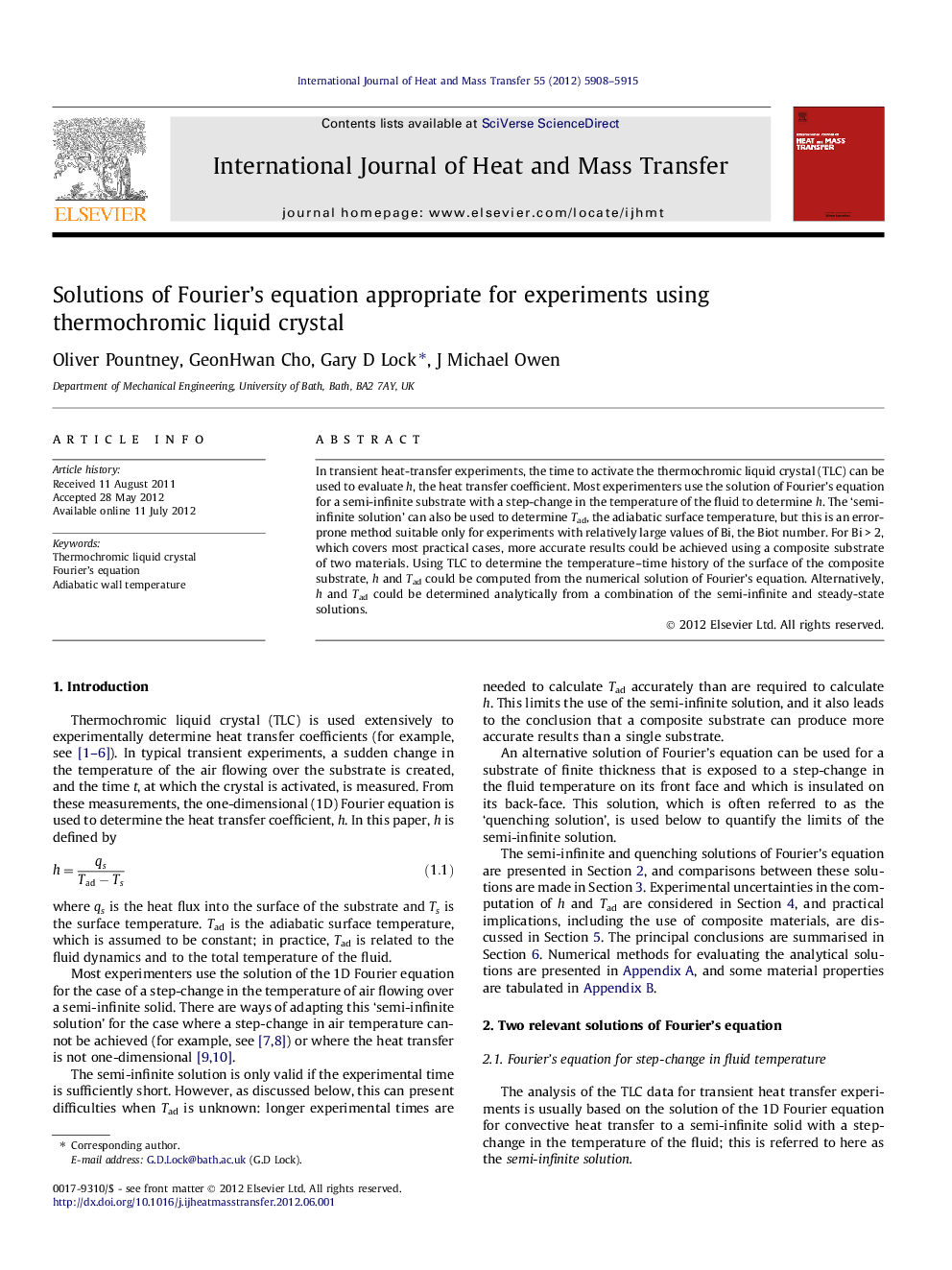| Article ID | Journal | Published Year | Pages | File Type |
|---|---|---|---|---|
| 659152 | International Journal of Heat and Mass Transfer | 2012 | 8 Pages |
In transient heat-transfer experiments, the time to activate the thermochromic liquid crystal (TLC) can be used to evaluate h, the heat transfer coefficient. Most experimenters use the solution of Fourier’s equation for a semi-infinite substrate with a step-change in the temperature of the fluid to determine h. The ‘semi-infinite solution’ can also be used to determine Tad, the adiabatic surface temperature, but this is an error-prone method suitable only for experiments with relatively large values of Bi, the Biot number. For Bi > 2, which covers most practical cases, more accurate results could be achieved using a composite substrate of two materials. Using TLC to determine the temperature–time history of the surface of the composite substrate, h and Tad could be computed from the numerical solution of Fourier’s equation. Alternatively, h and Tad could be determined analytically from a combination of the semi-infinite and steady-state solutions.
